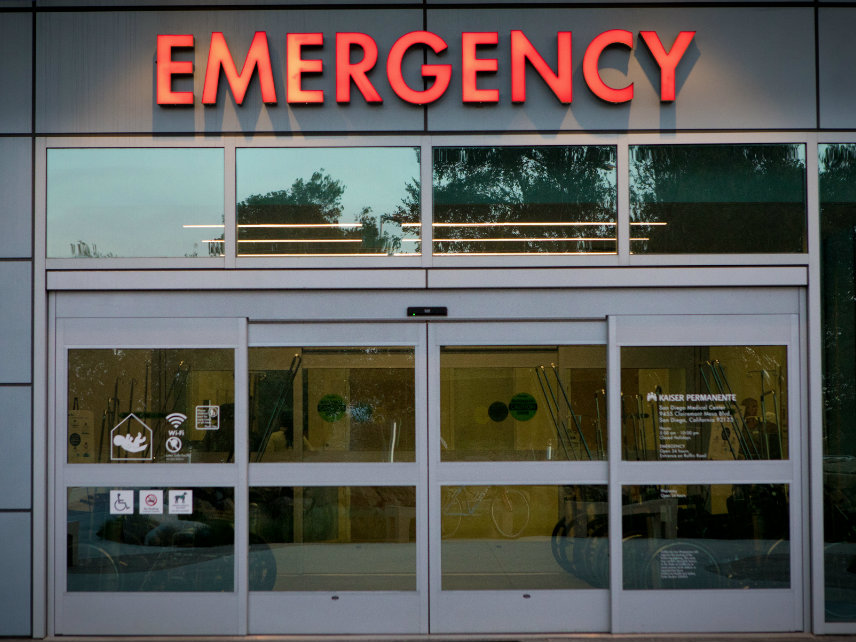Los Angeles Schools Facing $15 Billion Debt for Retiree Health Care
An unreleased analysis of the school district's post-employment benefits shows liabilities climbed from $13.5 billion in 2015 to $14.9 billion in 2017.

A forthcoming report on the Los Angeles Unified School District's retirement costs will show that the district has nearly $15 billion in unfunded health care costs for current employees and retirees.
The district's so-called OPEB liability—that's actuarial jargon for "other post-employment benefits," which includes the cost of medical, dental, and other health care benefits that fall outside the traditional pension system—has climbed from $13.5 billion in 2015 to $14.9 billion in 2017, according to the report, a copy of which was obtained by Reason. It has not yet been released publicly by the district. A spokeswoman for Aon Hewitt, the accounting firm that completed the assessment on the school district's behalf, confirmed the report's legitimacy.
The increase in the district's unfunded liability is driven by an adjustment in accounting standards that prohibits school districts and other public employers from using artificially high estimates for future investment returns, a strategy that in the past has allowed governments to hide some of their retirement liabilities. Under the new rules, future returns will be estimated at 3.6 percent, rather than the previous rate of 4.7 percent.
This change in accounting standards is expected to affect pension systems from coast to coast, leaving a more realistic (but also more expensive) picture of what taxpayers and governments will owe to current public employees when they retire. The change will also require public entities to show their OPEB liabilities on official balance sheets, something that few governments previously did.
In other words, the LAUSD is running out of ways to hide its public employee debt—and is running out of money to pay for it.
Because school districts in California receive state aid based on the number of students enrolled in district schools, the LAUSD's declining enrollment means there is less state funding to cover those future costs. The district has done a poor job of setting aside funds to keep its OPEB accounts full—the school district has only $244 million in assets to cover more than $15.2 billion in liabilities, the report shows—and a pay-as-you-go strategy works only as long as future cash flows can keep up. Public employees will continue to accrue benefits until they die, but declining enrollment exposes the district's fiscal problem.
While there are a variety of rules governing when school district employees can retire, most are eligible for retirement when their years of service and age add up to 80. In other words, a 55-year-old with 25 years of employment could retire with full benefits. The report shows that the most common ages for LAUSD employees to retire are between 59 and 61.
As Marc Joffe, a senior policy analyst for the Reason Foundation (which publishes this blog), wrote last year in the Orange County Register, the LAUSD's OPEB costs per student are much higher than several other large California school districts. For the 2016 school year, LAUSD paid $525 per student for OPEBs compared to $81 at Irvine Unified, $29 at San Diego Unified, and $0 at Oakland Unified, which does not subsidize retiree health insurance coverage at all. Unlike most other districts, the LAUSD provides the same health coverage for employees and retirees, with neither group paying premiums for their insurance. By contrast, retirees in Oakland pay their full health insurance premiums.
If the LAUSD required employees and retirees to cover just 10 percent of the health insurance premiums, the district could save $54 million annually, according to a 2015 report from the district's Independent Financial Review Panel.
And as the Los Angeles Times editorial board noted in November, even a supposed "freeze" on health care spending wasn't much of a freeze. "That doesn't mean its expenses will stay the same; instead, the district will withdraw dollars from a healthcare reserve to cover the higher costs, rather than spending out of the general fund," the paper explained.
The arrangement, the Times said, was "like saying it'll be easier to talk about buying health insurance after you're in the hospital."
If the forthcoming report from Aon Hewitt is any indication, the school district should be calling a metaphorical ambulance.


Show Comments (33)